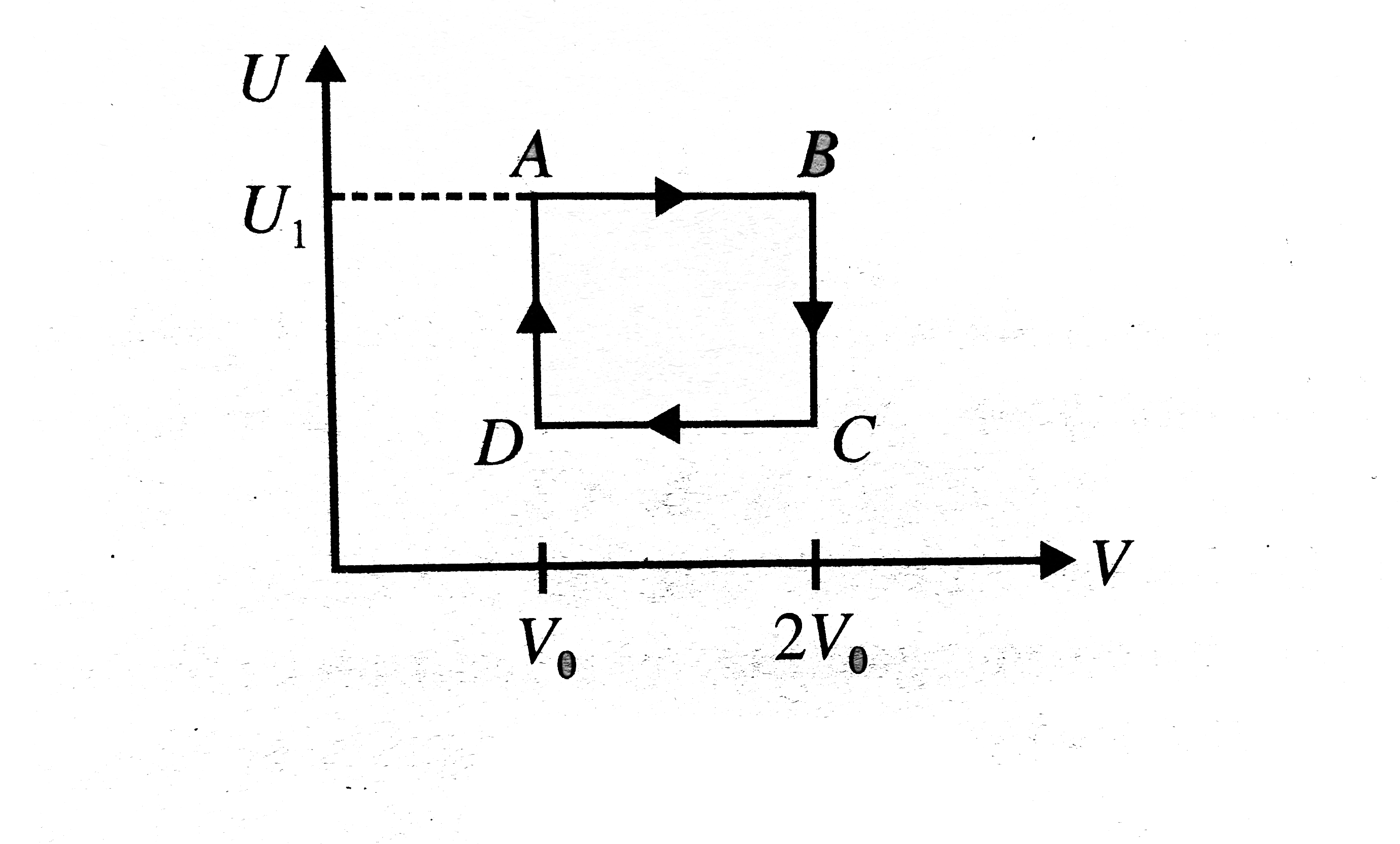One mole of an ideal gas at initial temperature T, undergoes a quasi-static process during which the volume V is doubled. During the process the internal energy U obeys the equation U=aV(3) where a is a constant. The work done during this process is-
3RT/2
5RT/2
5RT/3
7RT/3
Step by step video & image solution for One mole of an ideal gas at initial temperature T, undergoes a quasi-static process during which the volume V is doubled. During the process the internal energy U obeys the equation U=aV(3) where a is a constant. The work done during this process is- by Physics experts to help you in doubts & scoring excellent marks in Class 12 exams.
Topper's Solved these Questions
Similar Questions
A wide bottom cylindrical massless plastic container of height 9 cm has 40 identical coins inside it and is floating on water with 3 cm inside the water. If we start putting more of such coins on its lid. It is observed that after N coins are put, its equilibrium changes from stable to unstable. Equilibrium in floating is stable if the geometric center of the submerged portion is above the center of mass of the object) The value of N is closed to
 03:20View Solution
03:20View SolutionOne mole of an ideal gas has an interal energy given by U=U0+2PV , where P is the pressure and V the volume of the gas. U0 is a constant. This gas undergoes the quasi− static cyclic process ABCD as shown in the U−V diagram.
 The molar heat capacity of the gas at constant pressure is 03:20View Solution
The molar heat capacity of the gas at constant pressure is 03:20View SolutionOne mole of an ideal gas has an interal energy given by U=U_(0)+2PV , where P is the pressure and V the volume of the gas. U_(0) is a constant. This gas undergoes the quasi - static cyclic process ABCD as shown in the U-V diagram. The work done by the ideal gas in the process AB is
03:20View SolutionOne mole of an ideal gas has an interal energy given by U=U_(0)+2PV , where P is the pressure and V the volume of the gas. U_(0) is a constant. This gas undergoes the quasi - static cyclic process ABCD as shown in the U-V diagram. The gas must be
11:18View SolutionAn ideal gas with the adiabatic exponent gamma undergoes a process in which its internal energy relates to the volume as u = aV^alpha . Where a and alpha are constants. Find : (a) the work performed by the gas and the amount of heat to be transferred to this gas to increase its internal energy by Delta U , (b) the molar heat capacity of the gas in this process.
02:31View SolutionTwo moles of a monoatomic ideal gas undergoes a process AB as shown in the figure. Then, find the work done during the process in Joule.
01:15View SolutionDuring an adiabatic expansion of 2 moles of a gas, the change in internal energy was found –50 J . The work done during the process is
04:09View SolutionAn ideal gas system undergoes an isothermal process, then the work done during the process is
02:02View Solution2 मोल गैस के रुद्धोष्म प्रसार के दौरान आन्तरिक ऊर्जा में परिवर्तन 100 जूल पाया गया। प्रक्रम के दौरान कृत कार्य होगा-
View SolutionAn ideal gas system undergoes an isothermal process, then the work done during the process is
03:54View SolutionAn ideal gas system undergoes an isothermal process, then the work done during the process is
01:30View SolutionOne mole of an ideal gas has an internal energy given by U=U_(0)+2PV , where P is the pressure and V the volume of the gas. U_(0) is a constant. This gas undergoes the quasi - static cyclic process ABCD as shown in the U-V diagram. The molar heat capacity of the gas at constant pressure is
02:02View SolutionOne mole of an ideal gas has an interal energy given by U=U0+2PV , where P is the pressure and V the volume of the gas. U0 is a constant. This gas undergoes the quasi− static cyclic process ABCD as shown in the U−V diagram. The work done by the ideal gas in the process AB is

02:18View SolutionOne mole of an ideal gas has an interal energy given by U=U_(0)+2PV , where P is the pressure and V the volume of the gas. U_(0) is a constant. This gas undergoes the quasi - static cyclic process ABCD as shown in the U-V diagram. The gas must be
02:01View SolutionOne mole of an ideal gas has an interal energy given by U=U0+2PV , where P is the pressure and V the volume of the gas. U0 is a constant. This gas undergoes the quasi− static cyclic process ABCD as shown in the U−V diagram.

The molar heat capacity of gas at constant pressure is01:03View Solution

